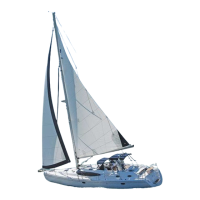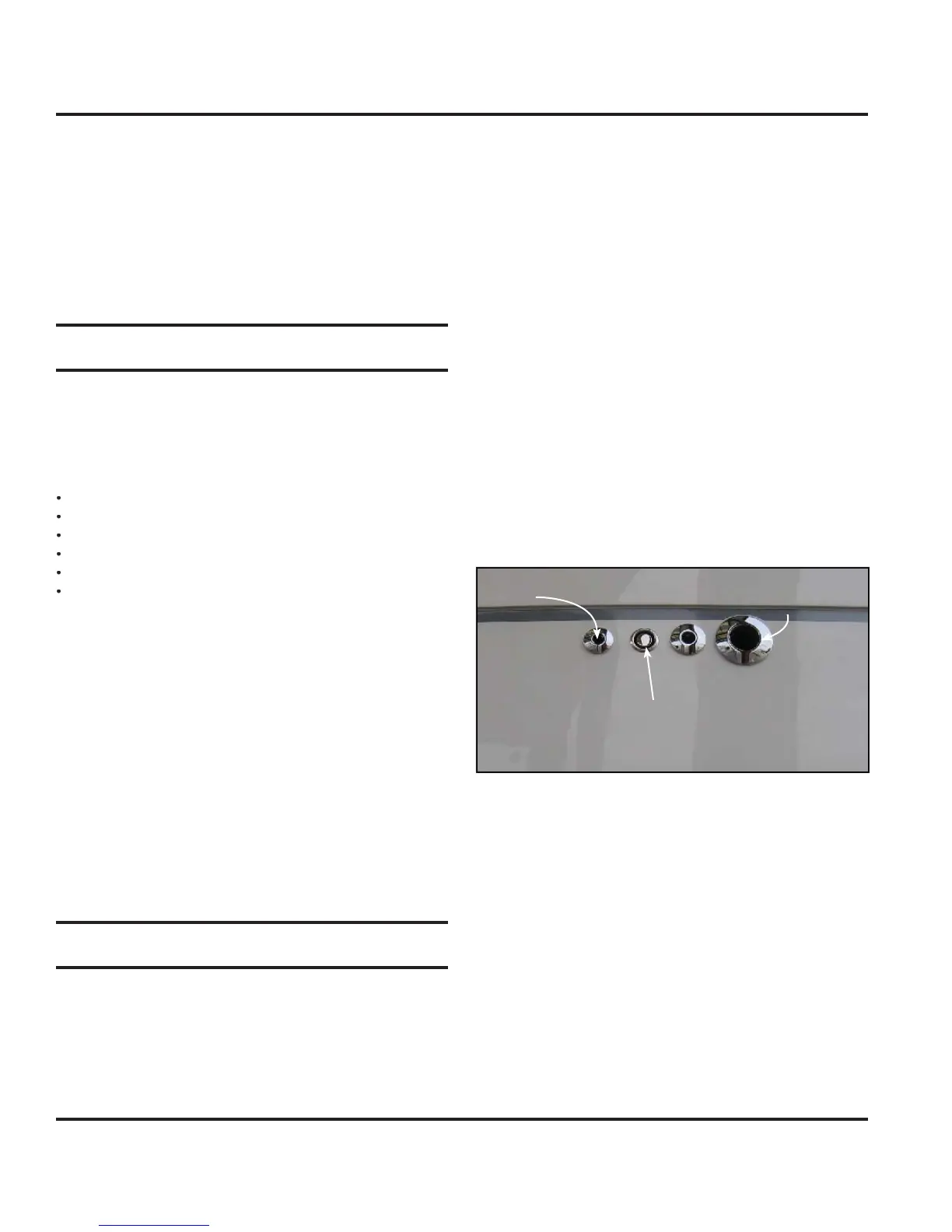nt
r
• Waste and Sanitation S
stems
1
.
This section outlines the use, care, and maintenance o
our boat
s sanitar
s
stems, as well as, bil
e pumps and
waste s
stems.
Important: U.S. Coast Guard regulations require that boats
have a sanitation system on board to control pollution. Waste
is to be stored in a holding tank or other device so it can be
properly disposed of at a shore facility. Discharging this waste
overboard in U.S. lakes, rivers, bays, and sounds, and within
three miles of shore in international waters is prohibited. Check
with the Coast Guard regarding regulations in your area.
Sanitation S
stems
Your boat has a sanitation and bil
e s
stem that is the
uttin
ed
e of sanitation. The components are desi
ned
to
it the most demandin
environment.
ome o
the
ol-
lowin
components are listed in the Sanitation and Bil
e
ection
ead S
stems
r
n
umps
oldin
tanks
r
t
r
hower
um
n t
s sect
on, we w
rea
t
e s
stems
own
nto a
ormat to help
ou better understand how
our s
stems
work and what it takes to maintain them. These s
stems
are further divided into four t
pes of dischar
e, Gra
water, Black water, Raw water, and
aseous dischar
es.
The
ra
water s
stem is comprised of waste that is not
ons
ere
raw sewa
e, w
c
s cate
or
ze
as
ac
water. Raw water is the coolin
water that is taken in
throu
h pickups, etc. and dischar
ed back. Gaseous
dischar
es are
our exhaust, or fuel vents. Parts o
the sanitation s
stems are Drains
Dischar
es, Pumps,
oldin
Tanks / Sumps, the lines or hoses that feed or
ra
n t
ese s
stems, an
t
e components t
at ma
e up
the collective point
or waste, and the access point
or
nit
ti
n.
10.1 Drains / Dischar
es
ost drains are in the
orm o
throu
h hulls or overboard
dischar
es. These fittin
s connect to a component, or
line, that is routed from a collection
oint or
oint of waste
ri
in. An
waste outlet that is
ravit
ed would be called
a drain. Likewise, an
thin
that was fed b
a pump would
e ca
e
a
sc
ar
e.
owever, waste is not limited to liquids, so, an example
m
t
e t
e ex
aust s
stem on
our en
ne or
enera-
tor. This s
stem disposes o
the
arbon Monoxide
as
throu
h the exhaust s
stem
In this section, we will cover all the t
pes o
drains and
dischar
es aboard
our boat,
ive
ou the details o
how
the
work, and the information so
ou can maintain these
omponents.
0.1.1 Throu
h Hulls
There has to be an outlet or a wa
to dischar
e the liq-
u
waste.
ese are ca
e
t
rou
u
s, an
t
e
are
penin
s in the hull or sides o
our boat with bronze
ittin
s. These are
itted to drain hoses and sized to be
ompat
e w
t
t
e s
stem t
at t
e
ra
n.
t t
e en
this section,
ou will
ind illustrations showin
ou the
locations o
our throu
h hulls and their speci
ic
unction.
The hoses that feed the throu
h hulls on
our boat are
looped over the
ittin
in order to prevent an
water or
waste
rom leakin
or drainin
back into
our boat. Fi
.
10.1
ives
ou a look at some throu
h hulls
ents, also shown in Fi
. 10.1, are another t
pe o
throu
h
hull and,
et another t
pe of waste disposal. These are
limited to allowin
over
low or air to escape the
uel
and the holdin
and water tanks aboard
our boat. This
s one wa
t
at
aseous waste pro
ucts, as we
as
n
some instances, liquids are disposed. However,
ou
should alwa
s avoid usin
the
uel tank vent as a wa
to
tell if
our tanks are
ettin
full when fuelin
. Fuel spills
are a dan
erous hazard.
ee the Fuel
ection o
this
manual
An
waste outlet that is
ravit
ed would be called a
drain. Likewise, an
that was
ed b
a pump would be
a
e
a
sc
ar
e.
Bilge
Pump
Discharge
Vent
Emergency Bilge
Pump Discharge
Fig.10.1

